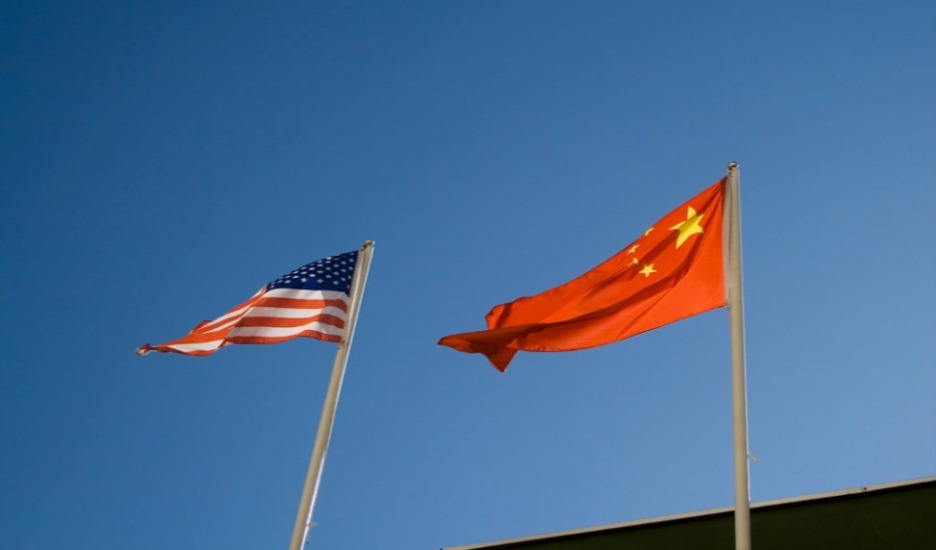Dewey Freedom of Navigation Operation Challenges China’s Sovereignty to Mischief Reef
Published by The Lawfare Institute
in Cooperation With

Reuters reports that on May 24 the guided missile destroyer USS Dewey (DDG 105) transited within 12 nautical miles of Mischief Reef, a feature in the South China Sea occupied by China. China made “stern representations” to the United States, and later the Chinese Foreign Ministry stated it sortied the guide-missile frigates Liuzhou and Luzhouto to the area and “expelled” the Dewey. This was the first public notice of a freedom of navigation (FON) operation in the Trump administration, and may prove the most significant yet for the United States because it challenges not only China’s apparent claim of a territorial sea around Mischief Reef, but in doing so questions China’s sovereignty over the land feature altogether.
China has expanded the low-tide elevation into a massive artificial island by adding 1,379 acres of crushed coral and gravel siphoned from the seabed. The Pentagon said the U.S. warship did a simple military exercise while close to the artificial island—executing a “man overboard” rescue drill. Such drills may not be conducted in innocent passage, and therefore indicate the Dewey exercised high seas freedoms near Mischief Reef. The U.S. exercise of high seas freedoms around Mischief Reef broadly repudiates China’s claims of sovereignty over the feature and its surrounding waters. The operation stands in contrast to the flubbed transit by the USS Lassen near Subi Reef on October 27, 2015, when it appeared the warship conducted transit in innocent passage and inadvertently suggested that the feature generated a territorial sea (by China or some other claimant). That operation was roundly criticized for playing into China’s hands, with the muddy legal rationale diluting the strategic message. In the case of the Dewey, the Pentagon made clear that it did not accept a territorial sea around Mischief Reef—by China or any other state. The United States has shoehorned a rejection of China’s sovereignty over Mischief Reef into a routine FON operation.
Mischief Reef is not entitled to a territorial sea for several reasons. First, the feature is not under the sovereignty of any state. Mid-ocean low-tide elevations are incapable of appropriation, so China’s vast port and airfield complex on the feature are without legal effect. The feature lies 135 nautical miles from Palawan Island, and therefore is part of the Philippine continental shelf. The Philippines enjoys sovereign rights and jurisdiction over the feature, including all of its living and non-living resources. China’s wholesale destruction of coral communities on and around Mischief Reef violated Philippine rights, stripping away the principal benefit of the United Nations Convention on the Law of the Sea (UNCLOS) from that developing state—exclusive rights to resources in the exclusive economic zone and on the continental shelf.
Second, even if Mischief Reef were a naturally formed island, it still would not be entitled to a territorial sea until such time as title to the feature was determined. Title may be negotiated, arbitrated or adjudicated through litigation. But mere assertion of a claim by China is insufficient to generate lawful title. (If suddenly a new state steps forward to claim the feature—Britain, perhaps, based on colonial presence—would it be entitled to the presumption of a territorial sea?) Even Antarctica, an entire continent, does not automatically generate a territorial sea. A territorial sea is a function of state sovereignty, and until sovereignty is lawfully obtained, no territorial sea inures.
Third, no state, including China, has established baselines around Mischief Reef in accordance with article 3 of UNCLOS. A territorial sea is measured from baselines; without baselines, there can be no territorial sea. What is the policy rationale for this construction? Baselines place the international community on notice that the coastal state has a reasonable and lawful departure from which to measure the breadth of the territorial sea. Unlike the USS Lassen operation, which appeared to be a challenge to some theoretical or “phantom” territorial sea, the Dewey transit properly reflects the high seas nature of the waters immediately surrounding Mischief Reef as high seas.
As a feature on the Philippine continental shelf, Mischief Reef is not only incapable of ever generating a territorial sea but also devoid of national airspace. Aircraft of all nations may freely overfly Mischief Reef, just as warships and commercial ships may transit as close to the shoreline as is safe and practical.
The Dewey transit makes good on President Obama’s declaration in 2016 that the Annex VII tribunal for the Philippines and China issued a “final and binding” decision. The FON program was explicitly designed to be low-key and non-threatening. President Carter implemented the program in 1979 after ad hoc “protest sailings” by U.S. warships to challenge unlawful coastal state claims over the oceans proved ineffective. Coming toward the end of the negotiations for UNCLOS, the FON program added operational assertions by U.S. warships and military aircraft to diplomatic protests and military-to-military engagement as tangible expressions of non-acquiescence to unlawful claims. Each of the three elements of the FON program helps to shape customary international law.
The United States will include the Dewey transit on its annual list of FON operations for fiscal year 2017, which will be released in the fourth quarter or early next year. How will the Pentagon account for the operation—what was challenged? The Dewey challenged China’s claim of “indisputable sovereignty” to Mischief Reef as one of the features in the South China Sea, and China’s claim of “adjacent” waters surrounding it. This transit cuts through the diplomatic dissembling that obfuscates the legal seascape and is the most tangible expression of the U.S. view that the arbitration ruling is “final and binding.”


.jpg?sfvrsn=5a43131e_9)


